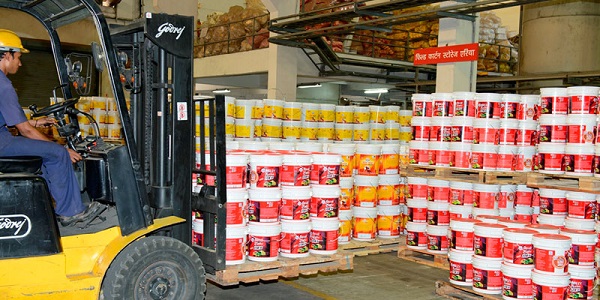Through the first three quarters of fiscal 2015-2016, Indias lubricant market appears to have fallen short of expectations. While giving scant credence to government statistics signaling a steep drop in demand volumes through the first nine months of the year, industry insiders agree that demand volumes saw little to no growth.
There seems to be consensus that volumes have suffered from weaker-than-expected demand in the industrial segment and longer drain intervals for automotive lubricants. Still, suppliers and analysts sound confident that the market will experience healthy growth in coming years.
Although Indias demand for lubricants had been lackluster for the past few years, numerous industry analysts and market players predicted early in the current fiscal year that growth would accelerate in 2015-2016. In a year when the pace of growth in many Asian countries has fallen, that would have constituted a rare bright spot for the regional market.
According to Indias Ministry of Petroleum & Natural Gas, Indias consumption of lubricants and greases from April through December shrank 6.1 percent to a total of 2.31 million metric tons, down from 2.46 million tons in the same period of 2014-2015. The agency reported that demand from April through November was down 7.4 percent year to year. Officials were unavailable to comment on the report.
Industry sources contacted for this article questioned the accuracy of such data.
There is no clarity on how petroleum ministry numbers are developed and what all these include – they could include domestic base stock production as well, said Anuj Kumar, project lead ofUnited States-based consultancy and research firm Kline & Co.
However, based on the tracking we do of the market, the decline of 7.4 percent [from April to November] looks very sharp and incorrect if we are talking about domestic sales of finished lubricants only, Kumar told Lube Report. We think that the finished lubricant market may have witnessed flat to small growth.
Private and public lubricants suppliers also told Lube Report Asia that the government numbers dont seem to reflect the market. Several mentioned that some of Indias automotive fleet has been rapidly switching to products that allow for longer drain intervals, which is leading to a slight dip in consumption, but that overall, their sales volumes increased last year.
Engine oil sales depend on various factors – increase in vehicle population, change in freight per vehicle, drain intervals, etc., said Kedar Apte,Castrol India Ltd.s brand and communications manager. The commercial vehicles engine oil market is flattish due to the reduced oil consumption in the new generation of trucks, because of advanced technology.
For heavy-duty (on- and off-road) and industrial segments, demand has taken more time to revive than expected, he continued.
Yet overall, the lubricants market seems to be growing, Apte told Lube Report Asia. [Castrol] believes that the motorcycle and car engine oil market is still growing. In the full year, we saw strong volume and value growth in both two-wheeler and passenger car engine oil categories as well as the independent workshop segment. The cars market has already turned around in 2015 and that should continue. Overall, we continue to be optimistic about the Indian lubricant market. Castrol Indias fiscal year mirrors the calendar year.

Photo: Hindustan Petroleum Corp. Ltd.
State-owned Indian Oil Corp. concurred. The introduction of conventional multigrade gear and transmission oils with long drain intervals – more than 100,000 kilometers compared to 40,000 kilometers [previously] – affected growth, Soumen Ganguly, deputy general manager of lubricants for IOC, told Lube Report Asia.
Due to low commodity prices in the steel, coal, power and mining sectors, [the industrial lubricants segment] suffered, but the passenger car segment witnessed growth, he said. Overall, IOC witnessed a 2 percent increase in sales.
Gulf Oil International Ltd.s Y. P. Rao recently said that India is one of the largest lubricant markets in terms of growth. Citing a Kline & Co. report, he told an industry conference in London last month that Indias total lubricants market will grow at almost 3 percent from 2013 to 2018 – with the consumer segment expanding more than 6 percent, while commercial lubricants demand will grow by around 2.5 percent, and industrial by approximately 2 percent.
The Ministry of Petroleum & Natural Gas reported that lubricant and grease sales in January, the latest month for which data have been published, were 38 percent higher than in January 2015. That brought the running total for the first 10 months of the fiscal year to 2.59 million tons, 2.6 percent lower than the same period of 2014-2015.
Even if sales volumes have failed to meet hopes this fiscal year, Indian lubricant suppliers are faring well in terms of profitability, thanks largely to sharp decreases in costs for base oil purchases. In the quarter ending Dec. 31, Gulf Oil Lubricants India Ltd. reported a 43.5 percent increase in net profit compared to the same period of 2014. Balmer Lawrie & Co.s greases and lubricants segment reported a 147 percent jump in profit, GP Petroleums Ltd.s increase was 12.5 percent, Tide Water Oil Co.’s profits climbed 86 percent with a 4.7 percent revenue increase, Apar Industries Ltd.s specialty oils and auto lubes segments sales volume was up 10 percent for a 236 percent spike in earnings and Castrol Indias profit was up 7 percent and Savita Oil Technologies petroleum products segment posted a significant gain over the prior year.